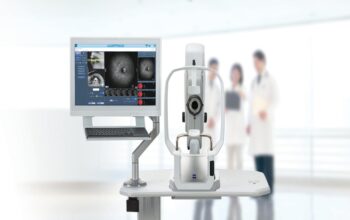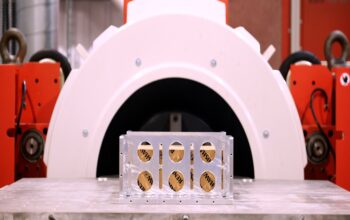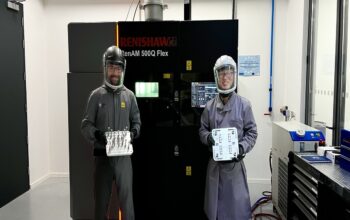Fraunhofer IOSB-INA creates access to standardized Industry 4.0 applications with the online tool for administration shells.
Mr. Pethig, Mr. Aron, thank you very much for the opportunity to speak, and congratulations on the go-live of the new AASPortal. We look forward to some first-hand insights and some information about the future potential, especially for medium-sized manufacturing companies.
Thank you very much, we are also very happy and are looking forward to the first feedback from the open source community!
Mr. Pethig, what exactly is the AAS portal, and what happens there?
The main component of the AASPortal is a website through which you can easily visualize and edit so-called asset administration shells (AAS). You can imagine that an administration shell in the sense of a digital twin contains all the information about a product. It is also important that this administration shell is standardized by the so-called “Industrial Digital Twin Association” (IDTA) and therefore looks the same for products from different manufacturers.
The AAAPortal then offers ready-made views for different use cases, e.g. B. to evaluate customer feedback or display process data in the form of dashboards. As a user of the AASPortal, I can easily adapt and expand these views to my needs and quickly reach my company-specific central contact point in the company for the digital twins of my products.
Describe the path to the current milestone in brief words. What was the biggest challenge for you and your team?
A few years ago we started developing a portal that we wanted to use in SmartFactoryOWL to visualize administration shells. The AAAPortal was born and has evolved from demonstration to demonstration. For example, we visualized process data from SmartFactoryOWL administration shells in dashboards, made digital nameplates from our machines visible, and analyzed customer feedback on our sustainable CUNA coffee cups produced in SmartFactoryOWL using the AASPortal. The realization grew relatively quickly that the AASPortal should also be interesting for companies and that further development as open source would make sense, especially since it is about standardization.
To be very specific – a small or medium-sized company, what would get from the AAS portal, what use would it be for them?
The company or its employees are quickly able to set up and use a web portal for AAS in the company. For testing purposes, this can simply be done via Docker, for example. You can then approach the topic of the administration shell as a standardized digital twin for Industry 4.0 using a “learning-by-doing” approach and simply implement your own views of the data it contains. An important feature is the high-performance search in the AAS inventory. Remember that companies can quickly reach several 100,000 AAS in operation! The AAAPortal helps to manage and use this inventory.
And what does the portal look like? What know-how would a user from our medium-sized company have to bring with them?
Hopefully the website should be very intuitive to use! You can register or log in and connect to AAS sources such as B. AAS or OPC UA servers or even file folders. The AAS contained can then be visualized, edited, and used in the relevant views. Companies that want to further develop the portal for their purposes also need software development expertise, especially in the area of web development (keyword: Javascript).
Mr. Aron, what are the advantages of going “open source” with the AAS portal, i.e. not marketing it as commercial software? What advantages do users have?
With the AASPortal, we hope to close a gap in the area of NodeJS in the existing open-source landscape around the AAS. I look forward to suggestions and contributions from the community. I would also like to invite you to expand our development team and thus further develop the AASPortal together. Of course, we support companies beyond the open source software, including within the framework of projects in their first steps with the AASPortal, and also carry out customer-specific extensions and adjustments. An advantage for users is, of course, that they can easily evaluate the AASPortal and use it free of charge.
And what are your plans for the AAS portal? What are the next steps in the next eight months – and what is the long-term strategy or what are your goals?
In the long term, I imagine AASPortal as a framework and modular system that constantly grows through concrete applications with partners in order to meet their requirements.
The next concrete steps are:
1. The AAAPortal can process and search 100,000 administrative shells.
2. The development of specific views on standardized submodels of IDTA.
Click on the following link Metrologically Speaking to read more such news about the Metrology Industry.









